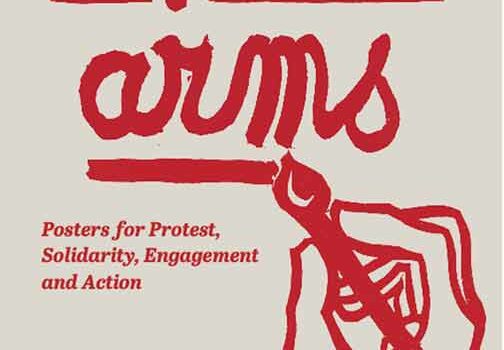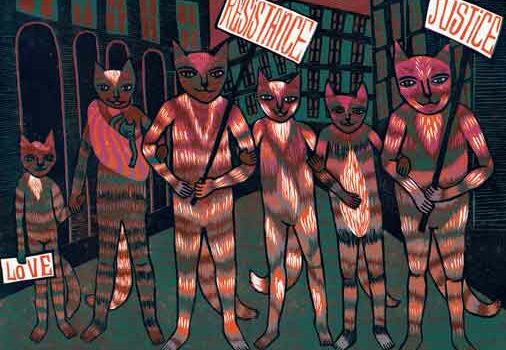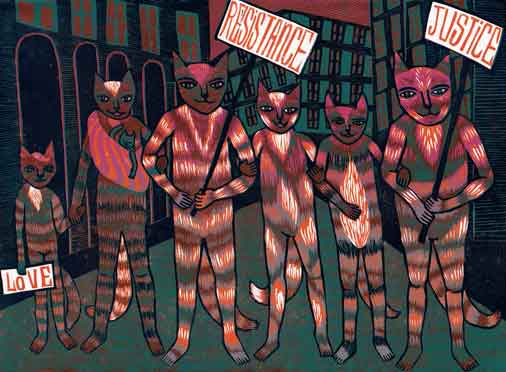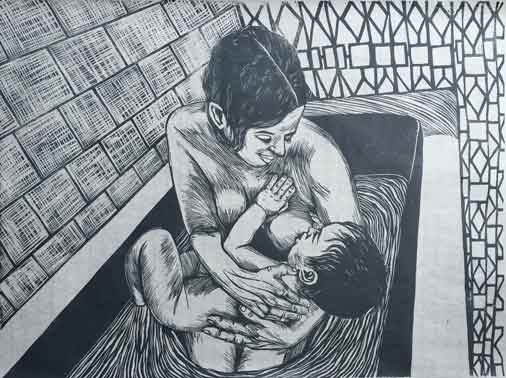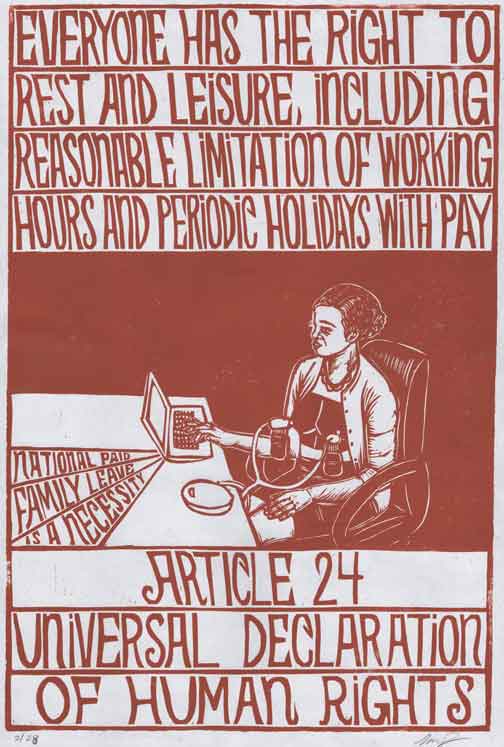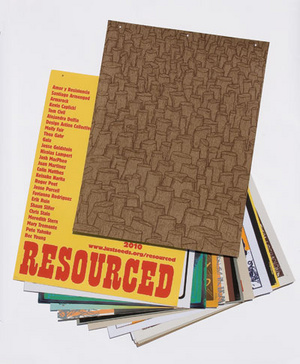This interview is printed in the hand sewn zine of “This is an Emergency!” a print portfolio on gender justice and reproductive rights.
To purchase a copy of the portfolio, you can click HERE.
To check out the website for this project, click HERE.

Meredith,
Where to begin? Today I am both discouraged and encouraged. I started college a dozen years before Roe. I had a close friend who traveled to Mexico to have an abortion and came back unable to bear children. I wore a button emblazoned with “Legalize Abortion” over a simple wire hanger. I was surprised and reminded of its iconic power when 46 years later a college student used that image in a poster to protest the Pence Amendment, which would have banned Planned Parenthood from receiving federal funds. After college, I worked in New York. All the women I knew went to the same wonderful ob/gyn, a man sympathetic to every woman’s right to decision making. When I called to tell him I thought I was pregnant he asked, “Do you want to be?” When I said “yes” his enthusiasm could be felt over the phone just as I know his support would have been had I given a different answer. He delivered my daughter Samantha, pre Roe while we lived in NY, and my son Peter, post Roe when we lived in NJ because I refused to go to any other doctor.
I don’t remember my reaction to Roe but I vividly remember the reaction of others when I ran a campaign for Congress a year later. Despite exhortations by consultants, my candidate was straightforward. He supported Roe no wiggling ifs, ands or buts. Pictures of fetuses were left on the steps in front of our house. Catholic supporters risked being called out by their Church. An amazing set of nuns had begun a group called “Network” that measured candidates based on 10 issues. Candidates who agreed on nine of the ten were endorsed. My candidate was endorsed by Network and it became a staple of our campaign materials. Today women are being forced to see pictures not unlike those left on my doorstep and the socially conscious nuns of Network, most of whom are now in their 70’s, are being attacked by their Church.
In 1985 I founded a firm called Martin and Glantz that specialized in grassroots organizing and communications strategies. Our first client was the National Abortion Rights Action League (NARAL). The organization remained a client for almost ten years. In 1989 during the Supreme Court deliberations on the Webster case, which had the potential to reverse Roe, our firm organized an amicus brief signed by Governors and State Legislators. I remember that the first signatory (by fax for those who remember the time before the internet) was Lowell Weicker, the Republican Governor of Connecticut. The response was extraordinary. At the time, the amicus had the most support from elected officials than any in the history of the Supreme Court. Today, we have the most anti-choice bills introduced into state legislatures than ever before.
During the 1989 Supreme Court deliberations, my 75 year old mother (I was 46) haltingly told me her personal story. Three years after I was born she became pregnant again. Her doctor told her that she would die if she carried the pregnancy to term. He also told her that he would not perform an abortion. She and my father struggled with the decision. My father made the argument that her two children, myself and my older brother, needed her and he couldn’t bear the thought of losing her. Asking around she found out about a doctor who would “take care of her.” Somehow he managed to find her a hospital bed probably by saying she needed a D & C (dilation and curettage). My mother described being put in a room down a corridor with no other patients. Her meals were left outside her room rather than brought to her bedside. Only her doctor cared for her while she was hospitalized. She felt humiliated and so demeaned that she was incapable of telling her activist daughter about this circumstance until she knew she was close to dying. I was filled with anger and resolve. My mother and I never had a particularly close relationship. She was demanding and we were of the 1950’s style “avoid difficult conversations” mother-daughter generation. Nevertheless, I credit her with infusing her values in me when I was growing up and again, when I was 46, powerfully influencing my attitudes and actions.
Not long after, I helped design and organize the 1992 Women’s March on Washington in response to another Supreme Court case. As much of an activist as I am, I have never been much of a marcher but that day in April, my husband Ron, Peter and I were joined by Samantha who came to Washington from college. We stood among the throngs, mostly unable to hear the speakers but definitely able to feel the energy. 1992 turned out to be the Year of the Woman at the ballot box. Samantha called me after the election when she had the opportunity to vote for two women for the US Senate, a woman for Congress and a woman for the state legislature. She said, prophetically, “I know it’s great mom but I also know it’s not enough.” How true.
The reproductive rights movement over the past twenty years seems to have become a bit complacent. Core activists – mostly my age – were vigilant. Abortion was more of a voting issue for those who opposed it than for those who supported the right. Medical advances made the issue more complicated. And, of course, Roe was considered settled law.
Today we are facing a crisis of unimaginable proportions. Abortion has always been a lightning rod for legislative attack. The number and sophistication of proposed restrictive legislation is unprecedented. 1000 plus bills that restrict access to reproductive health and rights have been introduced in state legislatures this year. 80 restrictions have been passed by one house. 10 have been enacted. Women stopped legislation requiring vaginal probes in VA but could not stop the legislation in TX. States like Pennsylvania passed sonogram laws with the Governor saying women could “just close their eyes” if they didn’t want to look at the sonograms that are required to be placed virtually up against their eyeballs. Legislation to ban funding of Planned Parenthood has been signed into law in a number of states and is being argued in the courts. Planned Parenthood clinics are being forced to close down.
The fact that contraception has become a flash point is scary. I feel as though I am living somewhere in a world squeezed between the Scarlet Letter and The Handmaid’s Tale. The impunity with which Rush Limbaugh could call a young woman a “slut” with no comment from the Republican nominee and silent agreement by the Catholic Church is alarming. It is unnerving that members of Congress voted for an amendment to allow Catholic Hospitals, Charities and Colleges to deny coverage of contraception and then were surprised when their constituents reacted in horror.
The current gender gap in the Presidential contest is not about any one legislative vote or widely reported comments. It is about the din of disrespect for women unlike anything I have witnessed. Sure, I have lived through a lot of discrimination – was my being fired from a job when it became apparent I was pregnant just a coincidence?; how many times when I was pregnant and running a Congressman’s office was I asked if I were his secretary?; what was the pay differential between my jobs in advertising and politics and the men along side me?; and, so on. There were no anti-discrimination laws until after my first pregnancy and we only now have some semblance of equal pay requirements. What distinguishes the current environment is the outspoken pride with which some of the attacks on women are taking place and the seemingly coordinated legislative attacks on reproductive health.
I don’t think a renewed effort around an Equal Rights Amendment is valuable. We don’t have time, shouldn’t spend the dollars and could well not win. We need a revolution by young people. I can’t stand that I have stood for women’s rights for my entire adult life (if you measure from age 18 that would be over 50 years) and still need to fight. I am not without energy. I am simply becoming beaten down. No amount of progress can substitute for the emerging national demeaning of women.
I remember when Samantha led an amazing revolt against an anti-women dictum at a Jewish summer leadership camp she attended. I remember when Peter refused to buy Dominos Pizza in high school because its owner was virulently anti-choice and the owner put his money where he mouth was; and when Peter wrote a paper about Roe. Both my children generously gave part of the very small inheritance they received from their grandmother to have a room named after her at a local Planned Parenthood. Both are stalwarts to this day.
However we need to get beyond those with these issues in their DNA. From my perch as Chair of the Planned Parenthood Action Fund I was able to watch and be encouraged by the outpouring of support for the organization during the Pence Amendment debate and when Komen for the Cure announced its decision to stop making grants to local Planned Parenthood affiliates. Much of the support came from young people. The average age of Planned Parenthood supporters dropped precipitously.
I believe only greater engagement of women at all levels of power will create change. It is the women in Congress who force public discussion of the issues before the body. It is women in the workplace who will need to stand for their own and their colleagues’ rights. It is women using the web to tell their stories, to create awareness and to offer opportunities to become part of the social media fabric of activism. It is the socially engaged artists who will use their art to spread their views. It is women not defined by party but by gender who will have to respond. I am encouraged by my sense that young women are willing to be part of this revolution. I worry that they may mostly exist within my “bubble.” But, I don’t have time to worry. I must use my time – as you must use yours in keeping with the old adage, “don’t mourn, organize.”
-Gina Glantz
